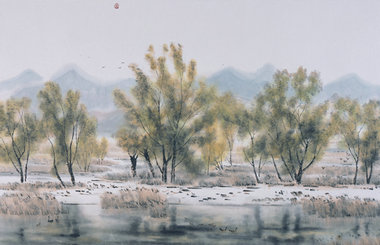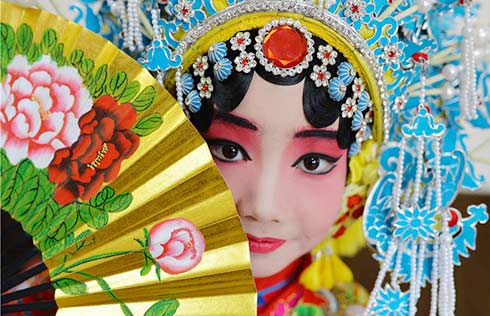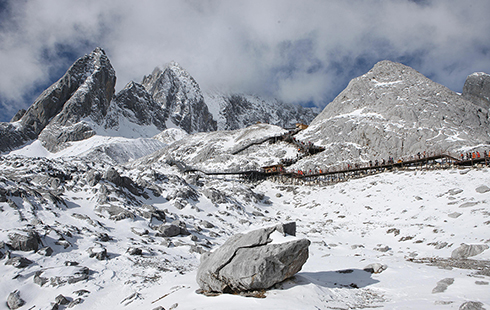An enemy is turned back - with plants as weapons
By Yang Yang ( China Daily ) Updated: 2017-07-29 07:13:10Sunlight and water
The city of Zhangye, 500 kilometers northwest of Lanzhou, is famous for its natural environment, and through it runs the second largest inland waterway in China, the Heihe River. Flat land, fertile soil, adequate water and copious sunlight have helped Zhangye become an important food production center for the country. In ancient times it was an important military base on the Silk Road.
Yet, as fortunate as Zhangye seems to be, it has not totally escaped the misfortunes of nature. Two thirds of one of its counties, Linze, on the southern edge of Badain Jaran Desert, consists of desert, including semi-desert, and it faces a severe threat from desertification.
Song Entai, 54, chief engineer of the Linze Forestry Bureau, says that when he was a boy, severe sandstorms were a frequent occurrence.
"From March to May in the 1970s and the 80s when sandstorms came, you couldn't see your hand in front of your face. We had this little verse: "When the wind blows, sand takes wing/Burying fields, houses and everything." If farmers managed a harvest of 200 kilograms a mu (667 sq m) that was a good year, but in the bad years they lost everything.
"We still have sandstorms, but there's much less sand."
In 1978, Linze county was listed as a key county for combating desertification as the Three-North Forest Shelterbelt Development Program took effect. Since then locals have set up sand defenses that consist of checkbox barriers, growing trees and shrubs inside them. Planting trees and shrubs is a top priority for the local government every April.
From south to north, trees such as poplar have been planted, and mixed forest zones have been planted, using sacsaoul and rose willows, and in the desert, shrubs that can better endure drought have been planted.
In the county's southern and central areas, plants have been put down to keep sand in check, and in the north forest zones have been created that push seven kilometers into the Badain Jaran Desert.
The frost-free season, which was an average of 152 days a year in the 1950s and 1960s, is 170 to 180 days a year now.
"That gives crops more time to grow, resulting in improved output," Song says.
|
|
|
|
|
|
|
|

























 Raymond Zhou:
Raymond Zhou: Pauline D Loh:
Pauline D Loh: Hot Pot
Hot Pot Eco China
Eco China China Dream
China Dream China Face
China Face






